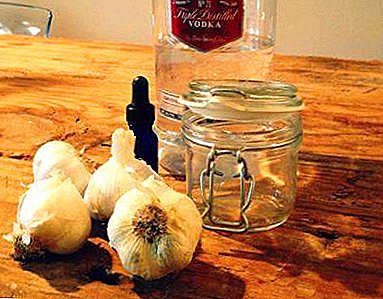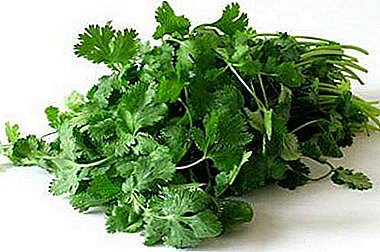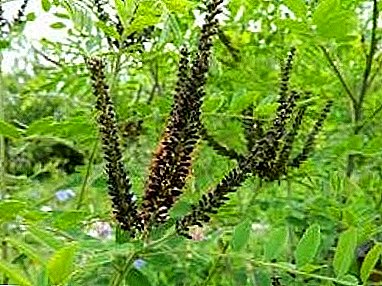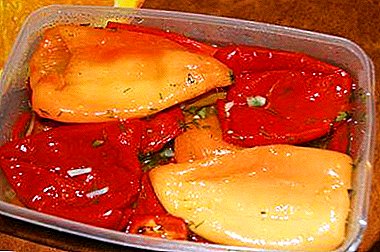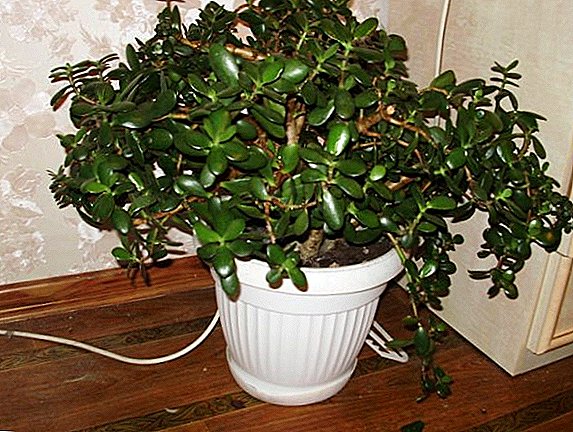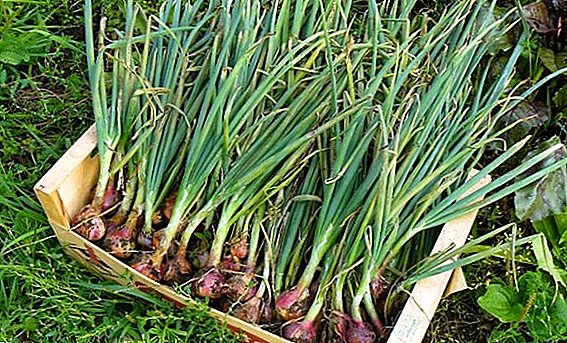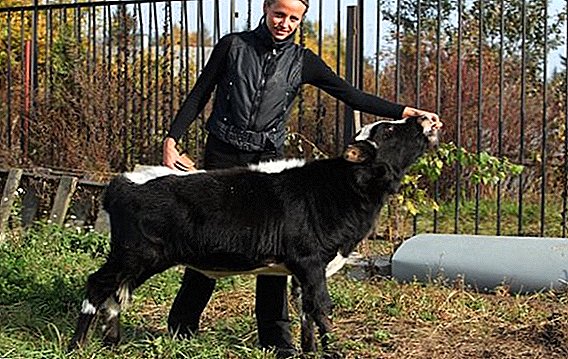 Large farms buy pure-bred representatives of cattle, which give huge amounts of milk or gain a lot more than a dozen centners.
Large farms buy pure-bred representatives of cattle, which give huge amounts of milk or gain a lot more than a dozen centners.
However, today we will speak about a small breed that is not very productive, but has other strengths.
History of origin
Yakut cows - aboriginal cattle of the Republic of Sakha. In 1929, they began to cross with such breeds as Kholmgorsk and Simmental, with the result that purebred specimens were preserved only in nurseries of Novosibirsk and in the Eveno-Bytantaysky ulus.
Description and distinctive features of the breed
Consider the characteristics of the Yakut meat and dairy breed, as well as the quality of the products.
Appearance and parameters
Representatives of the breed are stunted animals with long thick hair, which has different variations of color.  Body Parameters:
Body Parameters:
- cows weight - up to 400 kg;
- bull weight - up to 600 kg;
- height at withers - 115 cm;
- chest girth - 30 cm;
- slanting body length - 140 cm.
Breed standard:
- the body is dense, the skin is thick;
- head - medium, standard shape, with a broad forehead and straight, vertically set horns;
- the neck is wide, short;
- udder - small, tightened to the stomach;
- legs are short, muscular;
- color - black, white, red, spotted.
Important! Milk of Yakut cows on the content of protein and lactose occupies a leading position in the world. Even dairy breeds can not boast of such indicators.
Meat and Dairy Indicators
Since the breed is an aboriginal animal that did not go through the selection stages, the productive qualities leave much to be desired:
- Milk productivity - up to 2000 thousand kg per year.
- Milk fat content - 9-11%.
- The taste of milk is very high.
- Slaughter meat yield - 50-60%.
- The quality of meat is high (marbled, with streaks of fat).
- The safety of the young - 90%.
- The rate of weight gain is high, about 800 g per day.
- The average weight at the age of one and a half is 300 kg.

Advantages and disadvantages
Minuses:
- milking is carried out only by hand, the milking machine does not capture small nipples;
- in the cold season, the udder acquires wool, which makes it difficult to obtain milk;
- low productivity;
- lack of supply and high purchase price of young animals.
Find out what breeds of cows belong to the meat type: Hereford, Aberdeen-Angus, Kalmyk, Belgian Blue, Short Horn, Kazakh White-headed, and to the dairy ones - Brown Latvian, Aishir, Jersey, Yaroslavl.
Pros:
- milk and meat are of very high quality;
- productivity does not depend on climate;
- unpretentious in terms of nutrition and conditions of detention;
- small dimensions of the animal;
- excellent preservation of young.
Care and feeding ration
Not only the health of the animal, but also the productivity and vitality of the young depend on the care and proper nutrition. 
Requirements for the room
Temperature. The main feature of the Yakut breed is the good tolerance of even the most severe frosts (up to -50 ° C). This is achieved due to the fact that in the cold season the animal's coat becomes thicker and longer. In the summer, the cows shed, so they are not afraid of extreme heat either.
Important! Animals have innate immunity to such common diseases as leukemia, tuberculosis, and brucellosis.
The room. There are no requirements for a stable, as the animal can be kept in the open air all year round. The exception is the period after calving - only then it is necessary to provide the animal with protection from rain and drafts.
Flooring. An animal without health consequences may lie on any surface, including snow. For this reason, you can use absolutely any litter or do without it. The only thing worth remembering is that a cow should not sleep on a frozen metal surface.
Water Bowl and Feeder. Since the breed is characterized by low growth, it is better to use for feeding shallow feeders with a low edge. As a drinker, any container made of a material that does not release hazardous substances into the water is suitable.
Lighting and ventilation. If the animal is kept under the open sky or a small canopy, then additional lighting, and even more ventilation is not required. When kept in a stable, it is necessary to provide a standard day-time at least 12 hours a day. Ventilation is necessary only if the room is devoid of any openings, since the respiratory organs of an animal can damage substances released during a bowel movement (ammonia).  This animal does not like prolonged rains, when thick wool becomes wet and stops performing its main function. At this time, it is desirable to place the cow under an open shed.
This animal does not like prolonged rains, when thick wool becomes wet and stops performing its main function. At this time, it is desirable to place the cow under an open shed.
Did you know? In Hinduism, it is believed that you can reach heaven by swimming across a special river, and this can be done only by holding onto the tail of a cow.
Feeding ration and water
In the warm season, feeding can be forgotten, since the Yakuts feed on extremely rich food from the fields. If there are problems with fat content or volumes of milk, then additionally give roots or feed.
In the cold season, each individual per day should be offered at least 6 kg of hay, and about 1 kg of vegetables. Compound feed is given in a small amount, not more than 200-300 g per day.
It is worth knowing that representatives of the breed, due to anatomical features, can eat thin branches and bark of trees. Animals have an elongated intestine, which allows them to digest so coarse food.  As for the water, in this case the cow shows unpretentiousness. It can easily consume water from any source, even swamps. Fluid temperature is also irrelevant, but it is still not recommended to give snow.
As for the water, in this case the cow shows unpretentiousness. It can easily consume water from any source, even swamps. Fluid temperature is also irrelevant, but it is still not recommended to give snow.
Did you know? Cows harm the environment more than any transport. It has been proven that the gases emitted by animals during a bowel movement contribute about 18% to the greenhouse effect.
The Yakut cows are a wonderful primeval breed, which is distinguished not only by high quality of products, but also by calm character. The animal does not show aggression even in relation to pristauchim children. Problems can arise only during the milking, when the mother wants to feed the young, and only then give the products to you.


